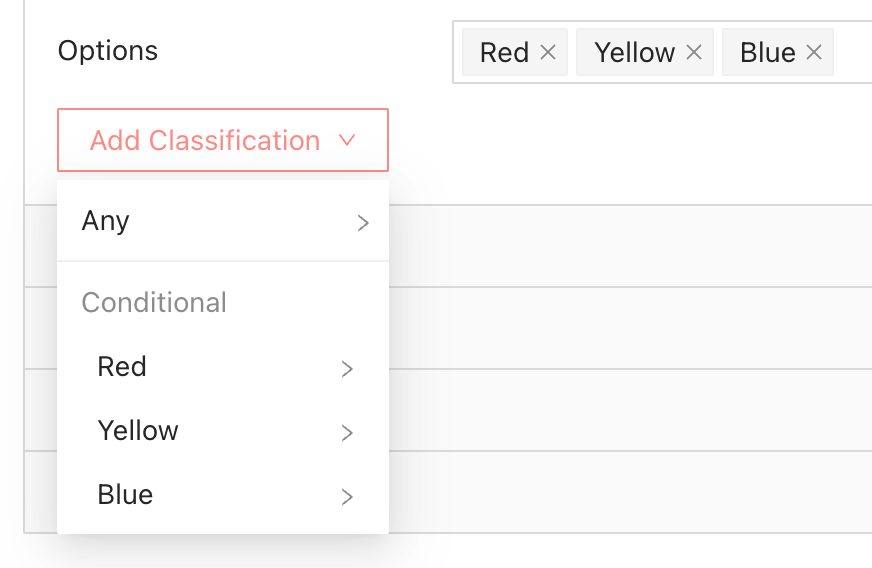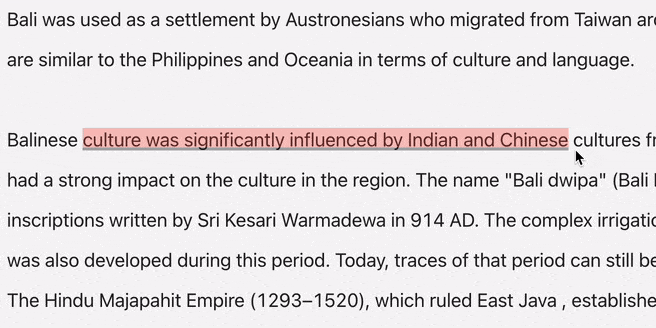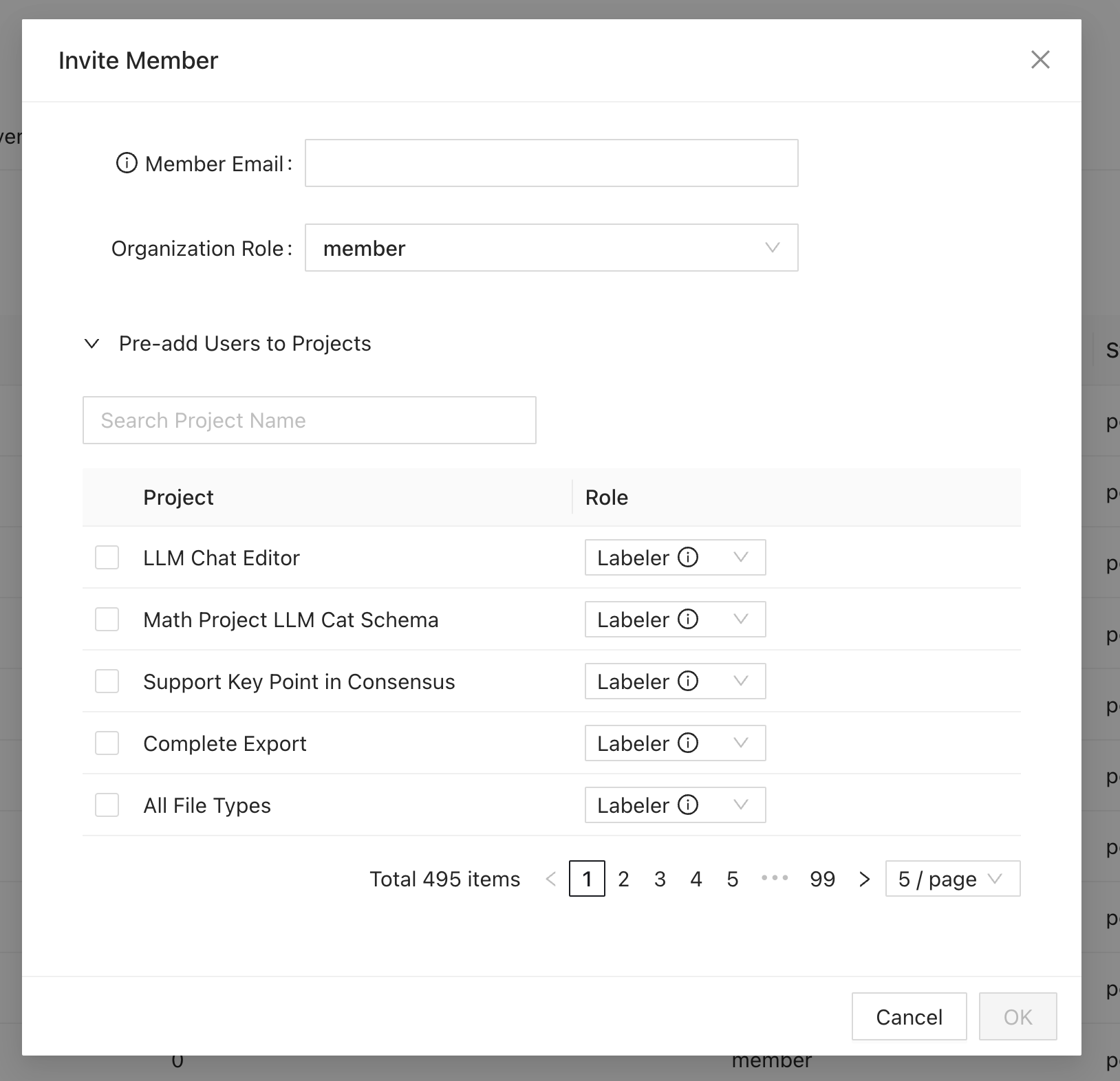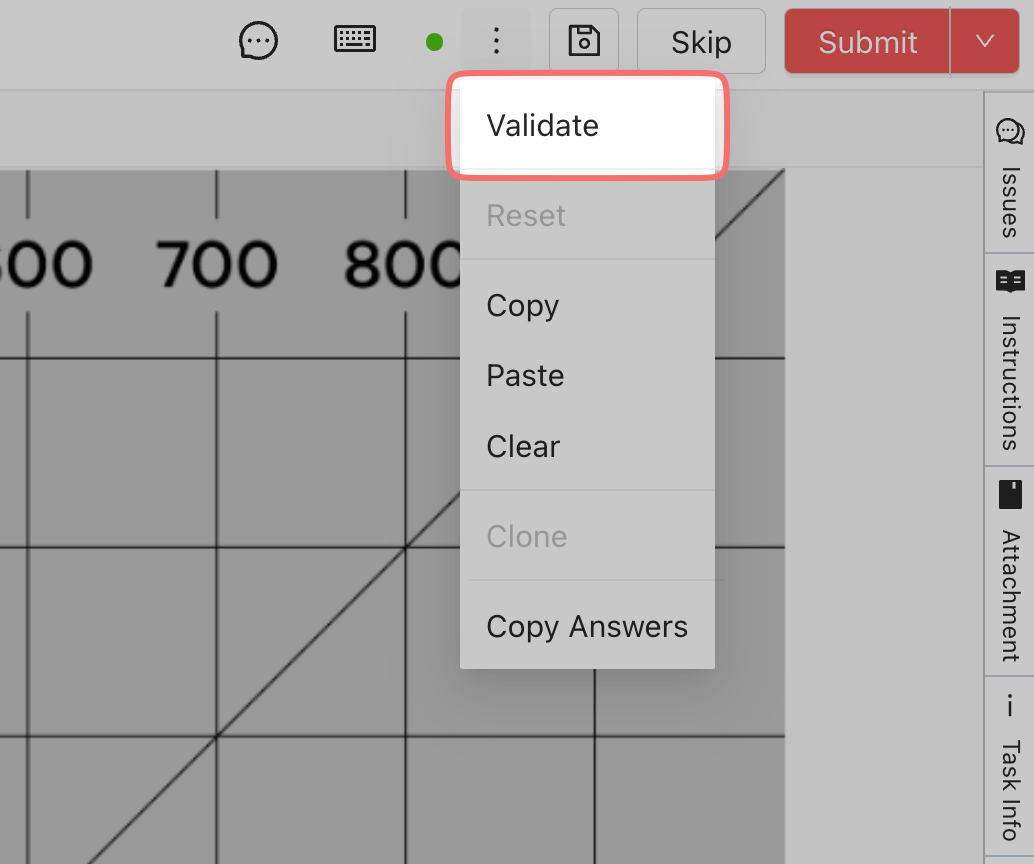Project managers can now have nested classifications display regardless of the answer to the parent classification.

The length of text span annotations can now be changed after they have been placed.

While adding users to an organization, project managers can now simultaneously “pre-add” them to projects in the organization. This way, once the invited users accept their invitations, they are automatically added to those projects.

Label Validations and fields marked as required are no longer checked during saving. They are still checked upon submitting.
A new “Validate” button has been added to the editor’s three-dot menu, allowing users to run label validations at any time.

The 3D viewer in the medical labeling editor now displays, by default, axis indicators and a 3D cube around the segmentations. They can be each turned off from the viewer’s three-line menu.
If a user has been invited to a org and pre-added to projects, but they have not accepted the invitation yet, this “pending” status will be displayed in both the org and the project members list.
Issues can now be filtered by error code and type in the Issues tab.
Users annotating an asset can now, in addition to simply submitting, choose to “Submit and Exit” to submit the current task and leave the queue.
Exports from the medical labeling editor will now be delivered in the compressed .seg.nrrd format rather than in zip-compressed .seg.nrrd files.
The performance of saving and submitting NRRD annotations has been improved.
Consensus stages now display a visible warning if thresholds have not been set, or if they have been all set to zero.
Default threshold values for Consensus stages is now 50% rather than 0%.
It is now harder to accidentally exit the dialog displaying 2FA backup codes during the first 2FA setup flow.
The text describing each setting in the editor’s Quick Settings panel has been updated for clarity.
The text describing the different skipping options in the project settings has been altered for clarity.